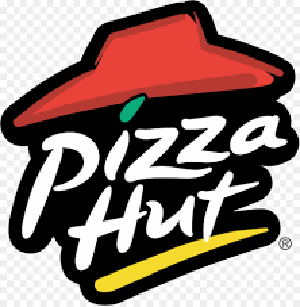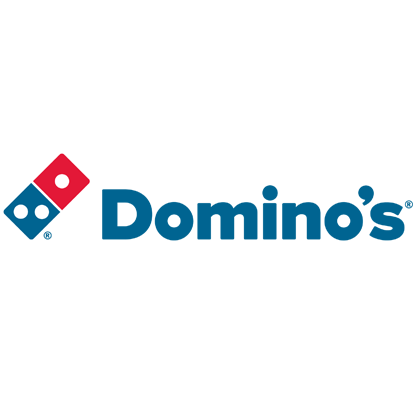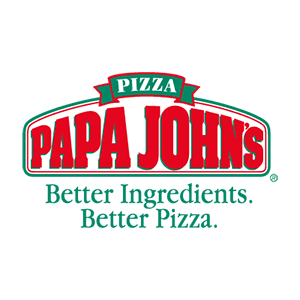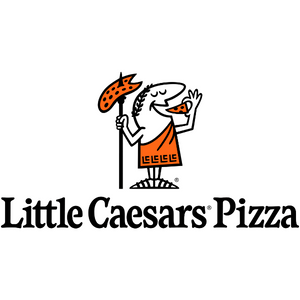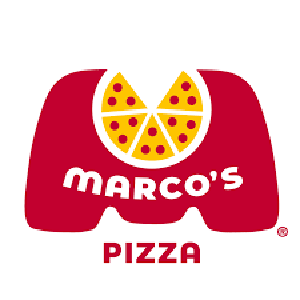Pizza Hut Franchise in 2025: Costs, Fee & FDD
Thinking of investing in a Pizza Hut franchise? Discover the costs, potential earnings, and key factors that make this iconic brand an interesting opportunity for pizza entrepreneurs. Explore our in-depth analysis now!
Table of Contents:
Pizza Hut is a legendary name in the pizza game, having been founded way back in 1958. Its fame comes from its delicious pizza, innovative crusts like the stuffed crust pizza, and diverse menu. This global pizza giant has been serving up slices of happiness for generations. With a rich history and a reputation for both classic and creative pizzas, including the signature pan pizza, Pizza Hut is a major player in the fast-casual dining industry. The franchise is all about bringing people together over great food, with a menu that has something for everyone—from cheesy, crust-filled delights to crispy wings and decadent desserts.
Pizza Hut’s menu is packed with iconic items like its famous pan pizza and stuffed crust options, alongside a variety of pasta dishes, wings, and desserts. Its signature pizzas come in various styles and toppings, allowing customers to personalize their orders. The core market includes families, college students, and pizza lovers who crave a reliable and tasty meal. Pizza Hut’s vibrant restaurants and friendly service make it a go-to spot for casual dining and celebrations.
Pizza Hut has an impressive global footprint, with thousands of locations across the U.S. and around the world. As of 2024, the franchise operates over 18,000 restaurants globally, reflecting its strong market presence and brand recognition. Each day, millions of customers enjoy Pizza Hut’s offerings, making it one of the most recognized names in the pizza industry. The brand is continuously exploring new markets and opportunities to expand its reach and satisfy pizza lovers everywhere.
Pizza Hut offers a robust support system for franchisees, including comprehensive training programs that cover everything from operational procedures to marketing strategies. Franchisees receive assistance with site selection, restaurant design, and construction, ensuring that new locations meet the brand’s standards. Ongoing support includes operational guidance, marketing strategies, and access to a network of experienced professionals. This extensive support helps franchisees maintain consistency and achieve success in their Pizza Hut ventures. With detailed Pizza Hut statistics, franchisees can make informed decisions to drive growth and profitability.

Pizza Hut Franchise Insights
- With decades of experience and a global presence, Pizza Hut benefits from high brand recognition and a loyal customer base.
- Pizza Hut’s extensive network of over 18,000 locations worldwide demonstrates its strong market position and successful franchise model.
- Backed by substantial national and local marketing campaigns, Pizza Hut franchises receive strong promotional support to attract and retain customers.
- Pizza Hut continually updates its menu and promotions to keep customers engaged and excited about new offerings.
Pizza Hut Franchise Key Indicators
Growth YOY (%)
0%
vs industry 0%
Total U.S. Franchised Units
5,300
3-year Failure Rate
8%
vs industry 11%
Sales-to-Investment ratio
0.8:1
How much does it cost to open a Pizza Hut franchise?
Understanding the investment and capital requirements is crucial when considering opening a Pizza Hut franchise, as it impacts your financial planning and decision-making. Knowing these costs helps you assess your financial readiness and secure the necessary funding. A clear grasp of the investment required ensures you can meet the franchisor’s expectations and set up your business for success. Proper financial planning will increase your chances of a smooth franchise launch and sustainable operations.
Min & Max Investment
Opening a Pizza Hut franchise involves several key costs, which are outlined in Item 7 of the Franchise Disclosure Document (FDD). you can see a breakdown of the costs to open a Pizza Hut below from the most recent Item 7 below:
| Type of Expenditure | Minimum Investment | Maximum Investment |
|---|---|---|
| Initial Franchise Fee | $25,000 | $25,000 |
| Equipment | $150,000 | $300,000 |
| Opening Inventory | $4,000 | $8,000 |
| Smallwares | $15,000 | $50,000 |
| Building and Site Improvements | $550,000 | $1,575,000 |
| Land | Varies | Varies |
| Computer System | $15,000 | $30,000 |
| Computer System Training | $0 | $1,500 |
| Additional Funds (3 months) | $5,000 | $21,500 |
| Miscellaneous | $10,000 | $22,000 |
| Advertising | $0 | $16,500 |
| Start-up “Other” | $3,000 | $4,000 |
| Total | $782,000 | $2,053,500 |
Item 7 in the Franchise Disclosure Document (FDD) is the “Estimated Initial Investment” section. It outlines the total costs a franchisee can expect to incur when starting a franchise, including the initial franchise fee, equipment, inventory, real estate, and other startup expenses. This section is crucial because it provides potential franchisees with a detailed understanding of the financial commitment required, helping them assess affordability and plan their investment strategy effectively.
Required Capital
To open a Pizza Hut franchise, the required capital, liquid assets, and net worth are structured to ensure franchisees have the financial stability and resources needed to succeed. Here’s a closer look:
- Initial Investment The total estimated initial investment for a Pizza Hut franchise typically ranges from $782,000 to $2.05 million This amount covers various startup costs, including the franchise fee, real estate, construction, equipment, initial inventory, and additional funds for initial operating expenses. The wide range reflects differences in location, size of the store, and specific market conditions. Assuming that you will finance your franchise investment, you should plan to have 20% of the total investment amount in the form of equity (cash) for the investment.
- Liquid Assets Requirement Pizza Hut generally requires franchisees to have a minimum of $250,000 to $500,000 in liquid assets. This is to ensure that the franchisee can handle unforeseen expenses and manage financial stability during the initial phase of operating the franchise.
- Net Worth Requirement The recommended net worth for a Pizza Hut franchisee is usually around $500,000 to $1,000,000. This includes the value of assets such as real estate, investments, and personal property, minus any liabilities.
These figures are estimates and can vary based on location and specific circumstances. It’s always a good idea to consult directly with Pizza Hut’s franchise development team for the most accurate and up-to-date information.
How much does a Pizza Hut franchise owner make?
Calculating the salary of a Pizza Hut franchise owner involves evaluating gross sales, assessing operational efficiency, and factoring in expenses like rent, utilities, and franchisor fees. Effective management of these elements can significantly influence the profitability and financial success of a Pizza Hut franchise. A thorough financial analysis helps estimate net profits, which in turn affects the owner’s salary. Understanding these factors ensures accurate salary projections and effective financial planning for a successful Pizza Hut franchise operation.
Pizza Hut Revenue & Gross Sales
In 2023, Pizza Hut franchises reported median gross sales of approximately $964,911. With its long history, Pizza Hut remains a significant player in the pizza industry, continuing to attract a strong customer base with its diverse menu and established brand presence.
Which key factors impact the average revenue performance of Pizza Hut franchisees?
The decline in U.S. Pizza Hut franchisee median gross sales from 2022 to 2023 could be attributed to several factors. Increased competition in the pizza and fast-casual dining sectors may have diluted market share. Changes in consumer preferences, including a growing trend toward healthier or gourmet options, could also impact traditional pizza sales. Additionally, economic factors such as inflation and higher operational costs might have affected customer spending and franchisee profitability. Adapting to these market dynamics and evolving customer demands is crucial for maintaining revenue growth in a competitive landscape.
Pizza Hut Franchise Operational Costs
When considering opening a Pizza Hut franchise, it’s essential to account for various ongoing operational costs to ensure smooth and profitable operations. These expenses are crucial for maintaining daily functions and delivering the quality that Pizza Hut is known for.
- Lease or Rent Costs associated with leasing or renting the restaurant space, which can vary depending on location and size.
- Utilities Monthly expenses for electricity, water, gas, and waste management.
- Food and Beverage Ongoing costs for purchasing ingredients and supplies to prepare menu items.
- Staff Wages Salaries and benefits for employees, including management, kitchen staff, and front-of-house personnel.
- Maintenance and Repairs Regular upkeep and unexpected repairs for equipment and facilities.
- Insurance Coverage for property, liability, and workers’ compensation.
By carefully budgeting for these ongoing costs, you can better manage your franchise’s financial health and ensure long-term success.
Pizza Hut Franchise Fees
When opening a Pizza Hut franchise, it’s important to be aware of the ongoing fees and additional costs that will impact your financial planning. Here’s a detailed look at the key fees you should consider:
- Royalty Fee Usually, 6.0% of Gross Sales. This fee covers various ongoing support services provided by Pizza Hut.
- System Advertising Fund Contribution 4.75% of Gross Sales. This fee is used for national and regional advertising efforts. Contributions made to the International Pizza Hut Franchise Holders Association (IPHFHA) may be credited against this amount.
- Digital Innovation Fee Currently $0.41 per transaction conducted through a digital or automated channel.
Understanding these fees will help you plan your finances effectively and ensure that you are prepared for the ongoing costs of running a Pizza Hut franchise.
Pizza Hut Franchise Earnings
The estimated median gross sales for a traditional Pizza Hut location is roughly $965,000, reflecting 2% decline from 2022. For an owner-operator, the earnings are estimated at $145,000, while semi-absentee earnings are projected to be even less due to the costs associated with hiring management support.
These estimates suggest a stable, though slightly decreasing, financial performance for the franchise. The decrease in earnings aligns with the decline in gross sales, indicating that while revenues are slightly lower, the overall profitability remains relatively consistent.
How to Open a Pizza Hut Franchise
Becoming a Pizza Hut franchisee involves a detailed process designed to ensure that potential franchisees are well-prepared and aligned with the brand’s standards. Here’s a step-by-step guide to help you understand the journey from initial inquiry to the start of operations:
- Initial Inquiry Begin by submitting an inquiry through the Vetted Biz website or directly contacting a franchise specialist. This will provide you with basic information about the franchise opportunity and initiate the process.
- Pre-Qualification Complete a preliminary application form to provide Pizza Hut with your financial background, business experience, and other relevant details. This helps determine if you meet the basic requirements for becoming a franchisee.
- Franchise Application Submit a formal franchise application. This includes more detailed financial information and personal background to assess your suitability as a franchisee.
- Initial Interview and Evaluation Participate in interviews with Pizza Hut’s franchise development team. They will evaluate your business acumen, financial stability, and alignment with the brand’s values.
- Site Selection and Approval Work with Pizza Hut to select a suitable location for your franchise. The site must meet specific criteria and be approved by the franchisor.
- Training Program Attend the mandatory training program provided by Pizza Hut. This training covers all aspects of operating a Pizza Hut restaurant, including management, operations, and marketing.
- Franchise Agreement Review and sign the Franchise Agreement. This legal document outlines the terms and conditions of your franchise relationship with Pizza Hut.
- Build-Out and Setup Begin the process of setting up your restaurant, including construction, interior design, and equipment installation, according to Pizza Hut’s specifications.
- Grand Opening Preparation Prepare for the grand opening by coordinating with Pizza Hut’s marketing team, conducting staff training, and ensuring all operational procedures are in place.
- Start of Operations Officially open your Pizza Hut restaurant for business. Continue to receive ongoing support from Pizza Hut to ensure a successful launch and smooth daily operations.
Following these steps will guide you through the process of becoming a Pizza Hut franchisee and help ensure that you are well-prepared to operate your new business successfully.
Pros & Cons
Pros
Established Brand: Pizza Hut is a globally recognized brand with a strong market presence, which can drive customer traffic and brand loyalty.
Proven Business Model: With a long history and consistent performance, Pizza Hut’s business model is well-tested and refined.
Menu Variety: The diverse menu caters to a wide range of customer preferences, which can attract different segments of the market.
Strong Marketing: Franchisees benefit from national advertising campaigns and promotions that can increase brand visibility.
Cons
High Initial Investment: Opening a Pizza Hut franchise involves significant upfront costs, ranging from $782,000 to $2.05 million.
Competitive Market: The pizza industry is highly competitive, with many established brands.
Location Dependency: Success is heavily reliant on securing prime locations with high Operational Demands: Running a restaurant involves intense operational responsibilities, including staff management and inventory control.
Franchise Agreement Restrictions: Franchisees are bound by strict contractual obligations and operational guidelines, limiting their ability to make local adaptations or changes.

